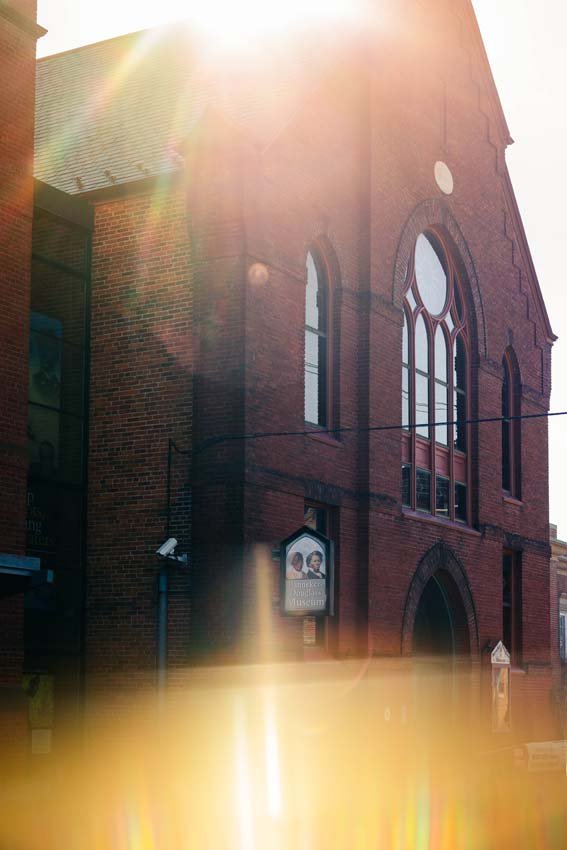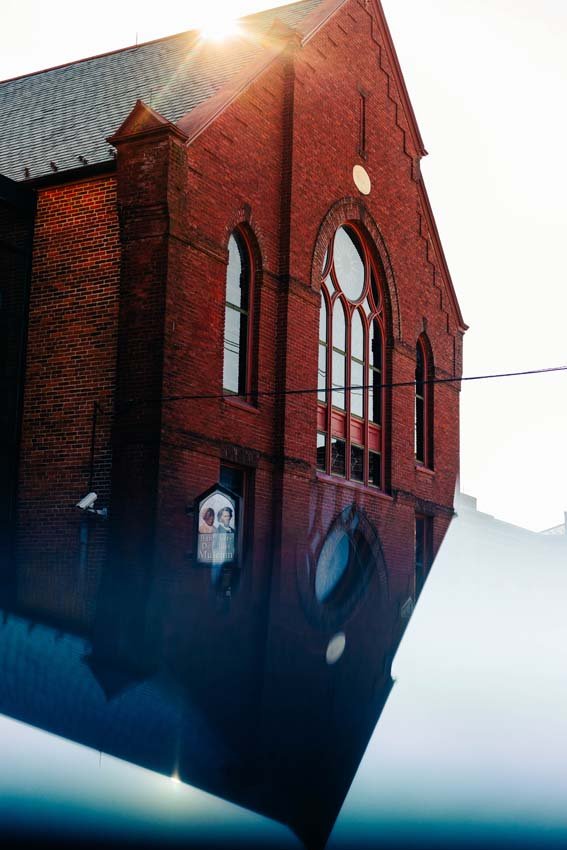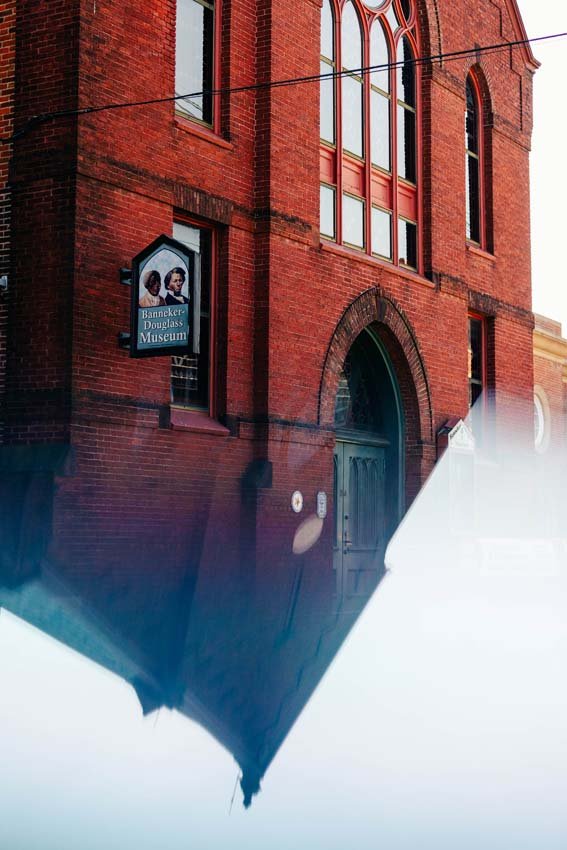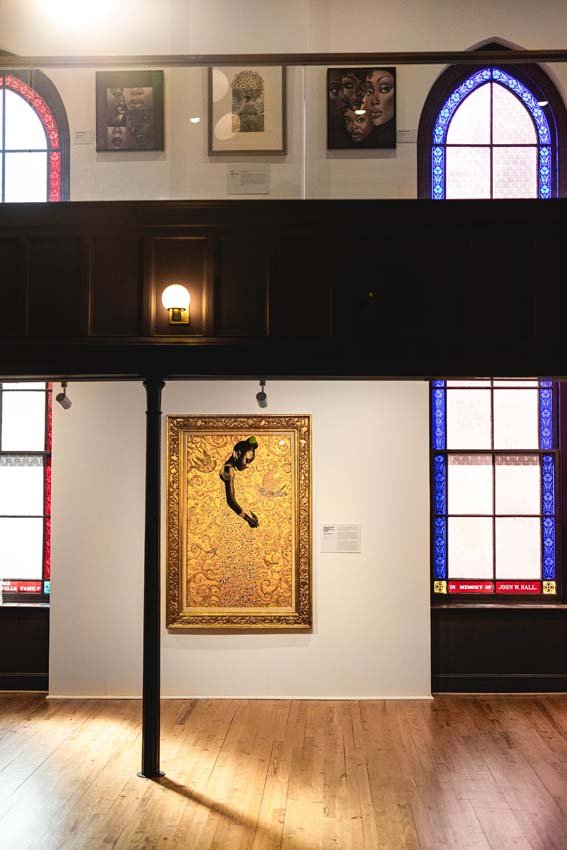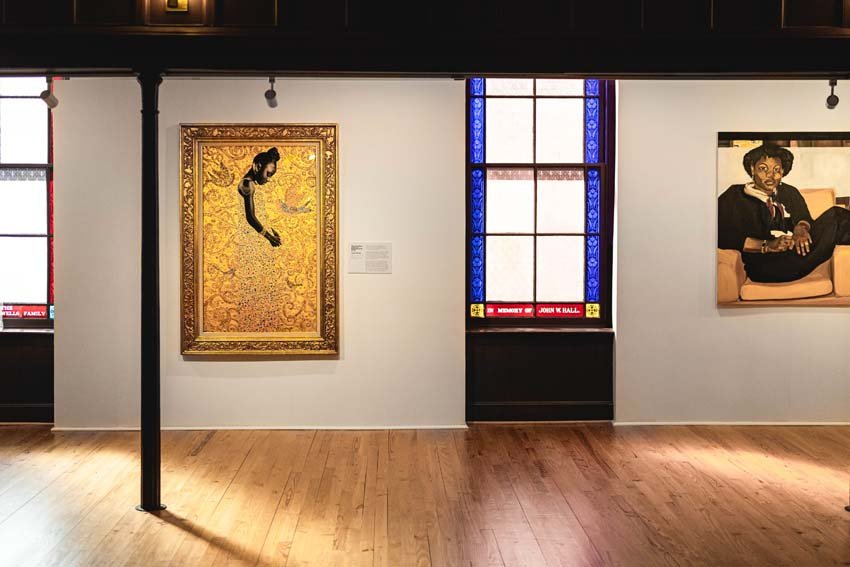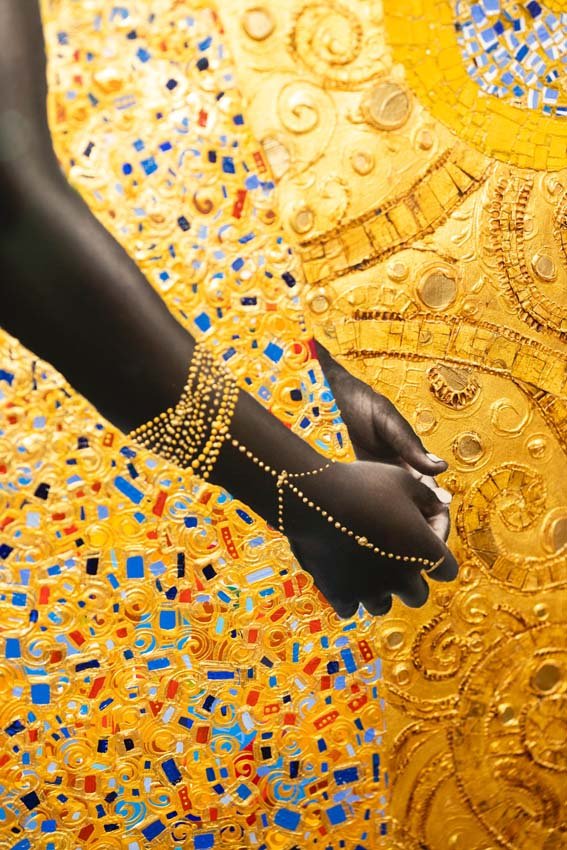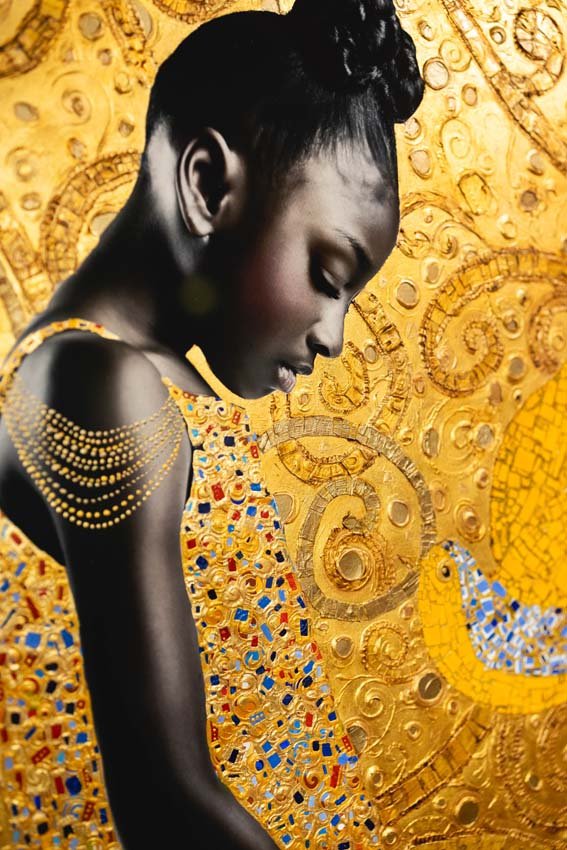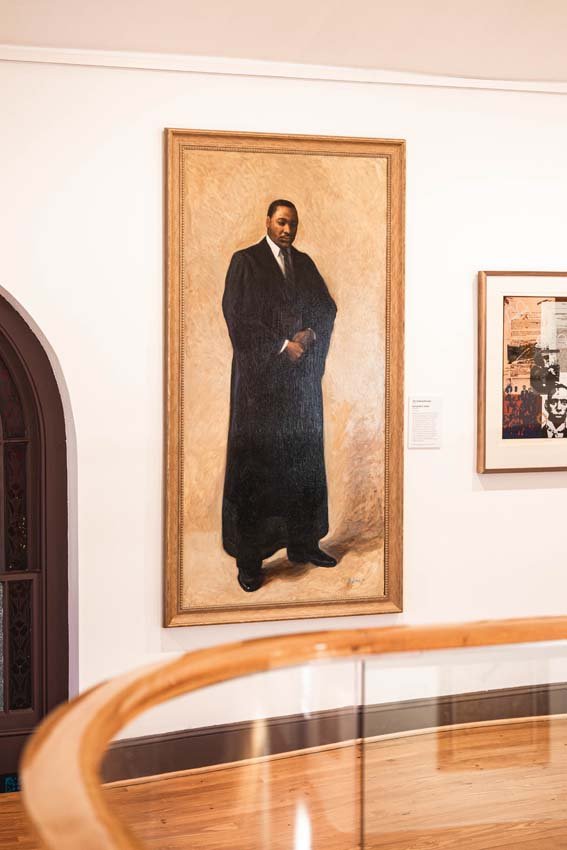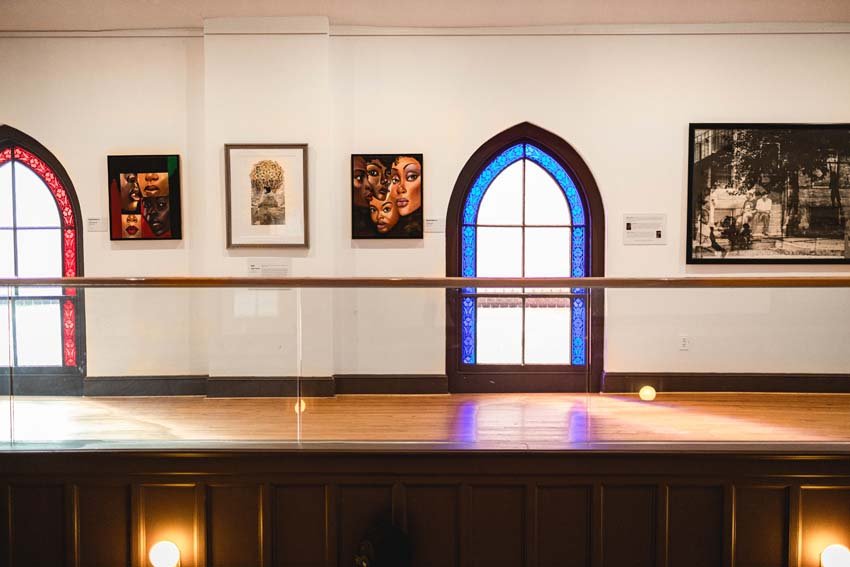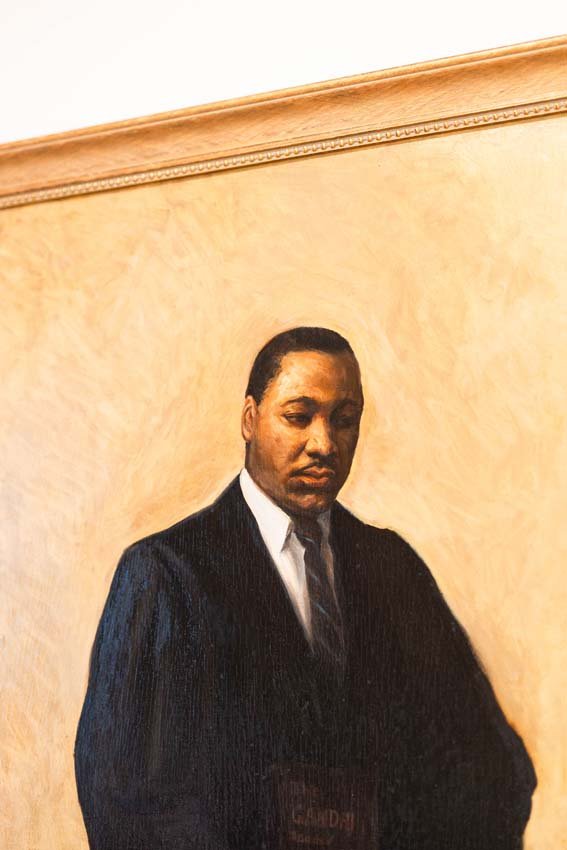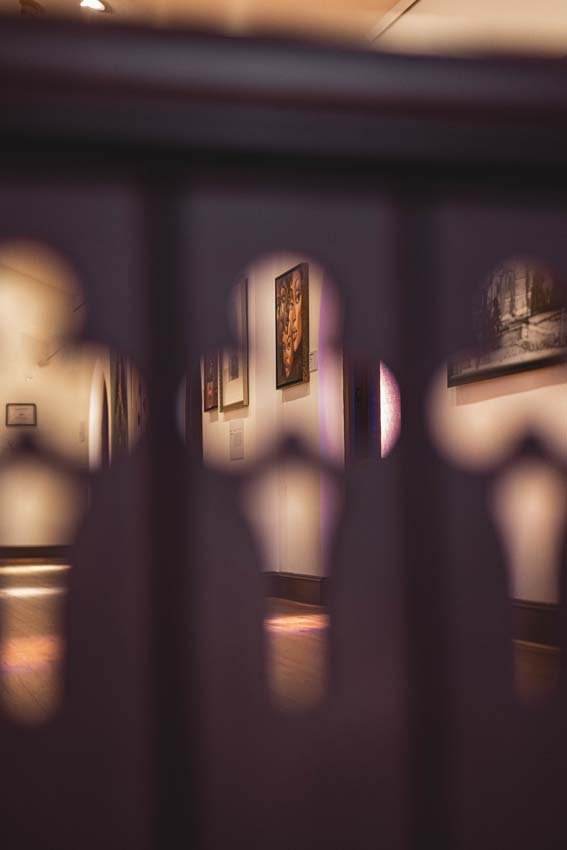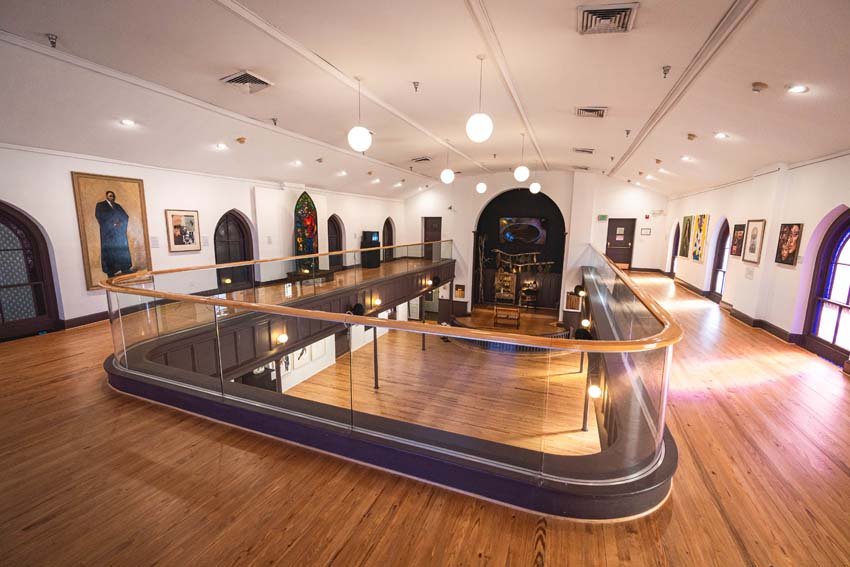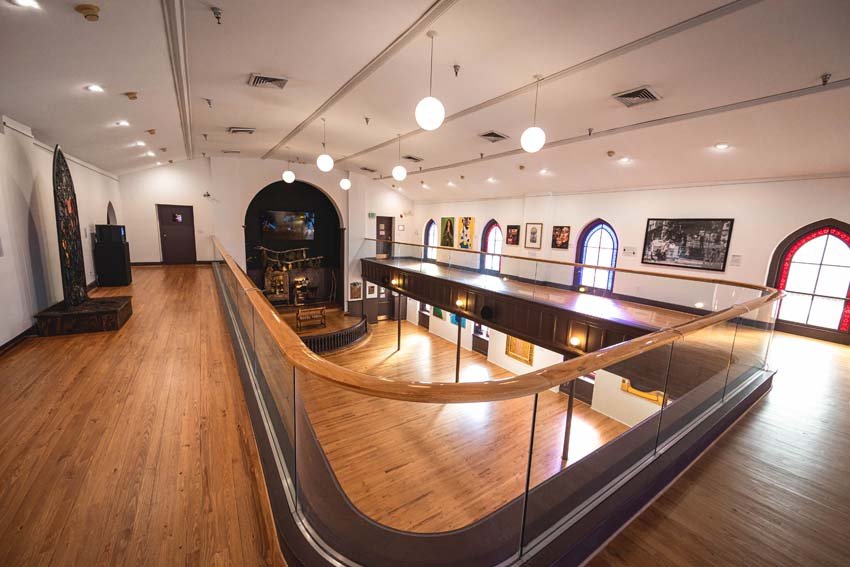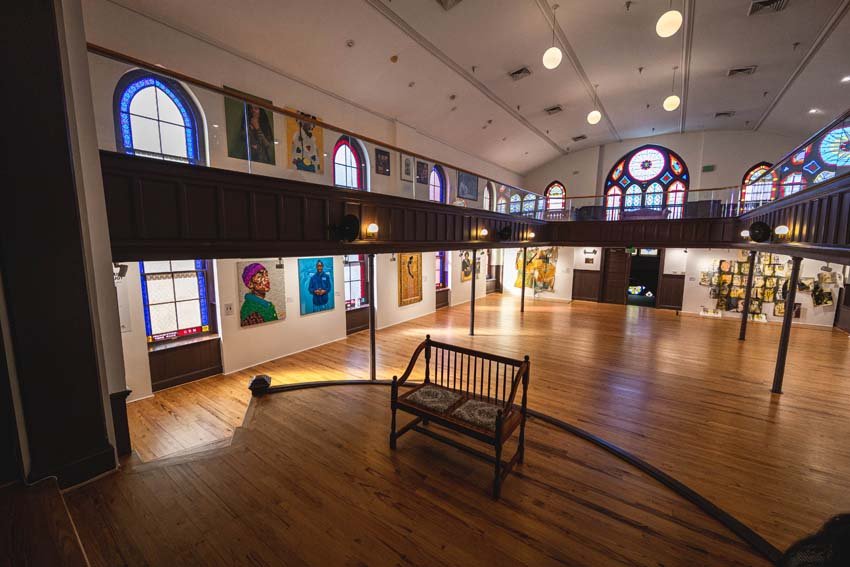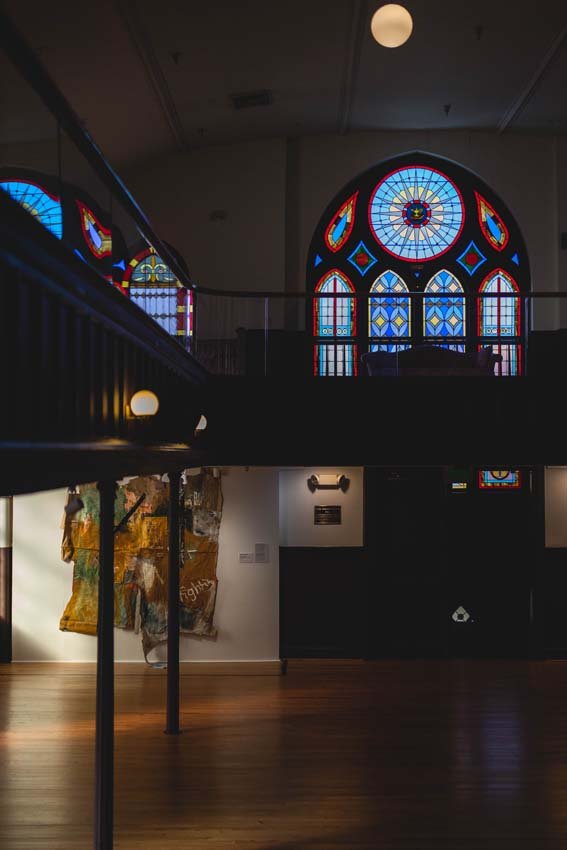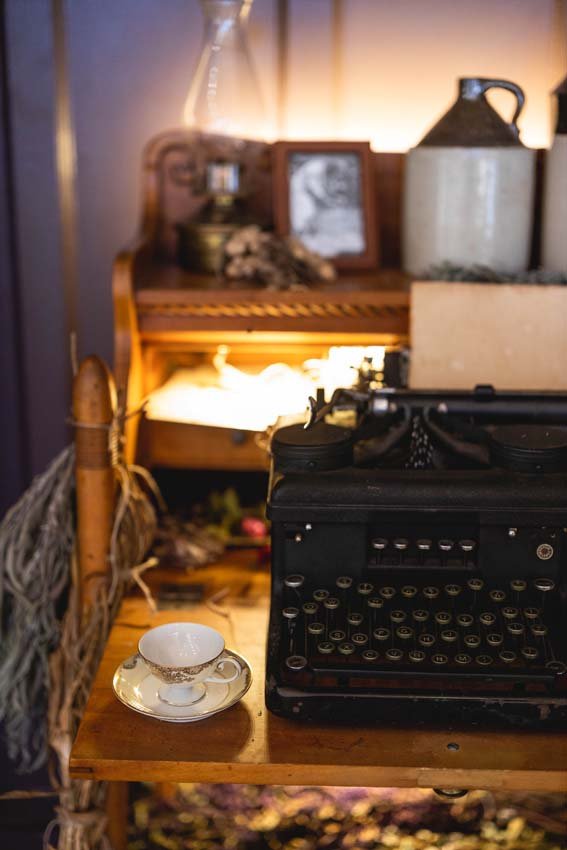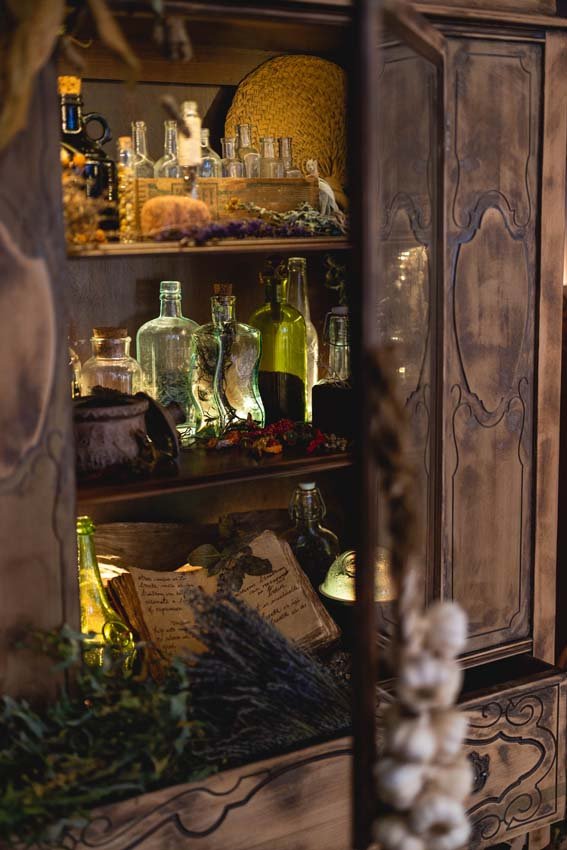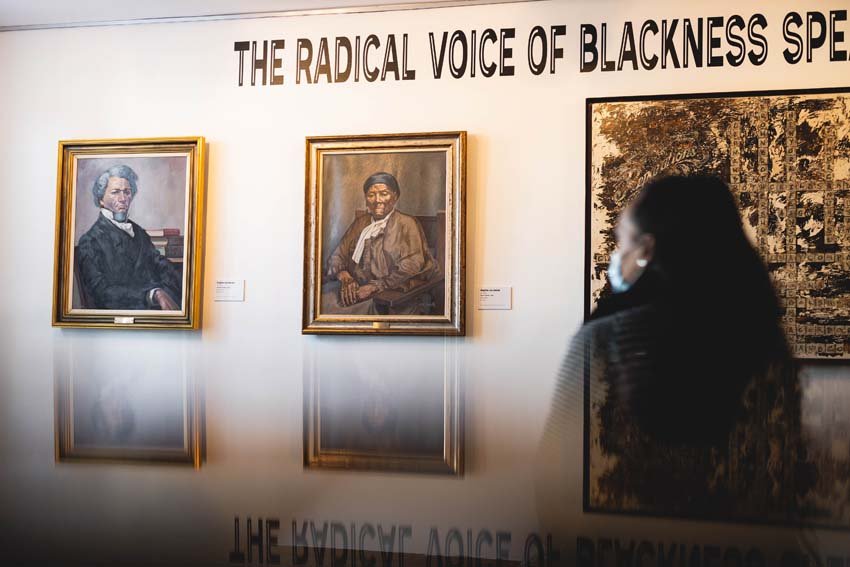+ By Desiree Smith-Daughety + Photos by Mary Ella Jourdak
Just off Church Circle in downtown Annapolis, tucked behind the Circuit Court for Anne Arundel County, sits a historical building that once housed the former Mount Moriah African Methodist Episcopal Church. Where voices were once raised in song, voices are now expressed through visual works. The Banneker-Douglass Museum, which opened its doors in 1984, is currently presenting The Radical Voice of Blackness Speaks of Resistance and Joy, an exhibition highlighting the experiences of Black people in the United States, past and present, examined through the lens of Maryland’s history.
“The Banneker-Douglass Museum is uniquely positioned to host this exhibit, as the very history of the Banneker-Douglass Museum is rooted in Black resistance and joy,” says Chanel Johnson, executive director of Banneker-Douglass Museum and the Maryland Commission on African American History and Culture. “A designated site on the National Register of Historic Places and in the Annapolis Historic District, the church is where Frederick Douglass, Rosa Parks, and other Civil Rights leaders once spoke.”
Myrtis Bedolla, whose home gallery is Galerie Myrtis in Baltimore, curated the exhibition. “Myrtis was the top choice to guest curate for the exhibit, as she represents critically acclaimed and internationally known African American artists based in Maryland whose work specifically documents and interprets Black social movements and history,” says Johnson.
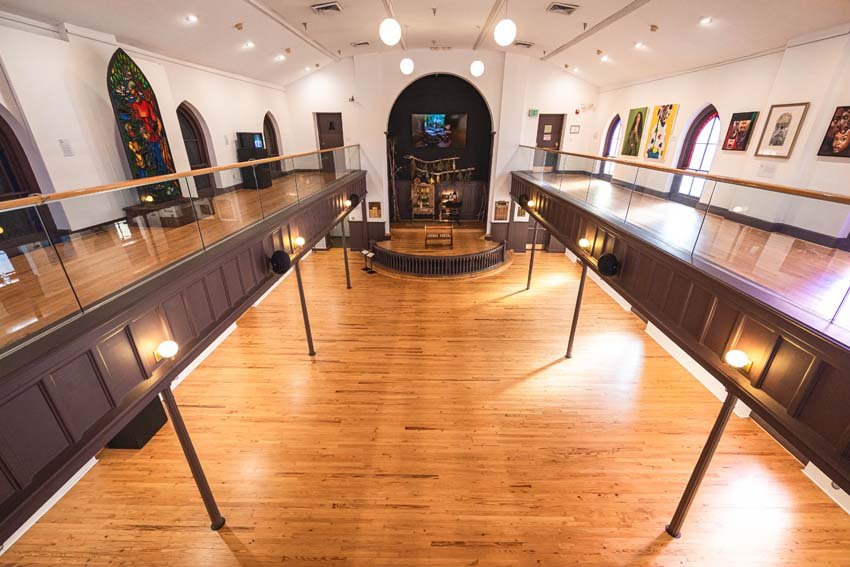
When first approached by Johnson to curate, Bedolla initially turned her down. She was deep into work on another major exhibition and didn’t know how she’d manage executing on another one. But Johnson didn’t take no for an answer, and Bedolla was finally persuaded, recognizing the museum’s importance as an institution. She also had a personal connection, with fond memories—she’d taken her sons to visit the museum when they were young.
The intention of the exhibition is to present a balanced narrative of Black communities that have suffered trauma due to the biases inherent in social and political systems that provide a scaffolding of racism, and to weave in how Black people have expressed resiliency and perseverance notwithstanding. “The exhibit focus stemmed in part from the 2023 theme of the Association for the Study of African American Life and History, which is ‘Black Resistance,’” says Johnson, “so it was only fitting that Myrtis help bring this interpretation of Black resistance and joy from the perspective of Maryland-based artists to fruition.”
In developing the exhibition, Bedolla was inspired by prominent figures in history who fought for freedom and equality—including Benjamin Banneker, Frederick Douglass, Harriet Tubman, Lillie May Carroll Jackson, and Thurgood Marshall—as well as present-day individuals who continue the work. The exhibition navigates both resistance and joy, the expression of which gives voice to a community through a range of media, including paint, video, photography, prints, and three-dimensional pieces. The selected works are situated in juxtaposition with each other: works highlighting resistance to repression are displayed on one side of the space, and those that represent and demonstrate joy face them from the other side.
On one side, resistance is viewed through an arc of Maryland’s history, including individuals who played a role. It moves to the contemporary experiences that are seminal in the recent collective history of the United States, particularly with the advent of the Black Lives Matter (BLM) movement and the Freddie Gray protests, with representative images incorporated into the exhibition.
Bedolla also spent time sifting through older works housed in the museum’s permanent collection that spoke specifically to the exhibition’s themes. Entering the museum, visitors are greeted by a series of historic works that are part of the exhibition, including a portrait of Banneker, an astronomer and mathematician whose brilliance showed what could be achieved in resistance to the narrative of his eighteenth-century world.
Two of the artists included from the museum’s permanent collection are Hughie Lee-Smith and Nathaniel Kato Gibbs, now deceased, both of whom were commissioned by the museum to create works featuring Black icons. Gibbs painted a portrait, The Gandhi Reader, of Reverend Doctor Martin Luther King Jr., whose Maryland connection was a visit to Baltimore just before his assassination and who devoted his life to nonviolent resistance in pursuit of freedom. Lee-Smith’s portraits included as subjects Banneker, Douglass, Tubman, and Jackson.
Foundational to the historical examination, slavery figures prominently and speaks to what Douglass and Tubman fought against. For a contemporary perspective, conceptual artist Wesley Clark’s included works are puzzles created to highlight slavery’s deep connection to economics. Profiteers I: Enslavement examines companies that profited from slavery and are still in business today. Profiteers II: Imprisonment examines the prison industrial complex and companies that profit from prison labor.
“The impact of this groundbreaking exhibition on the social landscape of Annapolis will be that residents and visitors will be encouraged to go deeper into their exploration of Maryland’s Black history and culture and to explore the scholarship and artistic expression of African American artists in our city and state, all year-round,” says Johnson. “We’re collaborating with Visit Annapolis and Anne Arundel County to expand the ‘Black History 365’ initiative, which is defined as ‘a collection of stories, art, and events that highlight the history, heritage, and contributions of Black Marylanders and the history of the people of the African Diaspora in Annapolis and Anne Arundel County.’”
Children are also depicted throughout the exhibition. Monica Ikegwu’s artworks focus primarily on African American youth, including their fashions, from how they dress to how they style their hair. In this exhibition, her piece highlights central themes, such as whether preconceived notions can be put aside about who these youth might be and whether these children can express themselves and who they are outside of the lens of such preconceived ideas.
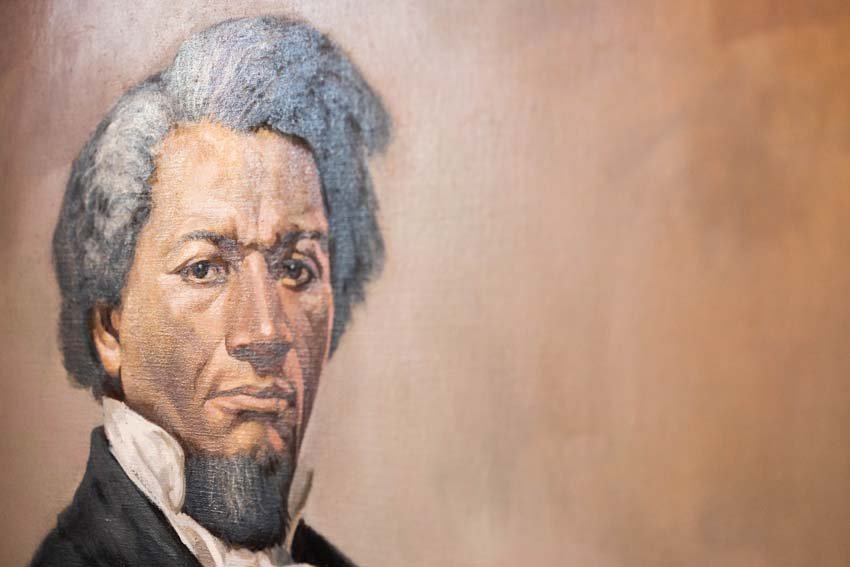
Of the many poignant pieces, one is of a young Black girl, who is perhaps five or six years old, holding a sign that reads, “BLM.” Bedolla recounts wondering about the impression of that experience on the little girl and how it might inform her life and perhaps inspire her future. Bedolla’s aim was to examine the arc of such resistance, from the days of Douglass and Tubman to BLM and the current, ongoing struggle for Black equality.
Annapolis-based artist Tawny Chatmon was invited to take part in the exhibition and created Peace and Joy Are the Birthrights of All Beings for inclusion. (It is one in a larger series titled “Remnants.”) “I refer to myself as a photography-based artist, and the primary theme of my work is to celebrate the beauty of Black childhood and the Black family,” she says. “For this piece included in the exhibition, I started with a photo I’d taken of my goddaughter and digitally enhanced it to emphasize how beautiful our hair is. After refining and printing, I hand painted with acrylic paint, 24-karat gold leaf, and materials such as paper and other mixed media.” Chatmon spends anywhere from one to six months creating a piece because of the layers included in her development process.
Referring to accounts of children who are sent home from school, for example, because their natural hairstyle has been deemed inappropriate, Chatmon says, “When I create a work, I send it out with a purpose. I want viewers to stop in their tracks when they look at it and look beyond the beauty and look into the issues I am responding to through my work.”
Bedolla points out the message that Chatmon’s work conveys to children, whether it’s a boy with hair that’s been stylized in a barber shop or a girl wearing braids, that they’re beautiful and treasured, and it validates who they are.
Chatmon hopes that the exhibition will result in more museums exhibiting Black artists, including primarily featuring Black shows and exhibitions. “We are seeing that visitors of all backgrounds are walking away from the exhibit inspired by the critically acclaimed African American artistic talent in Maryland and empowered by the history of Black resistance in America,” says Johnson. “We can already see people, especially new visitors and tourists, coming to the museum specifically for this exhibition. There will also be opportunities for more people to learn more about the artists’ work through exhibit-related programming throughout the year.” The exhibition, which opened on November 10, 2022, runs through September 30, 2023. █
For more information, visit bdmuseum.maryland.gov/exhibitions and visitannapolis.org/black-history-365.
